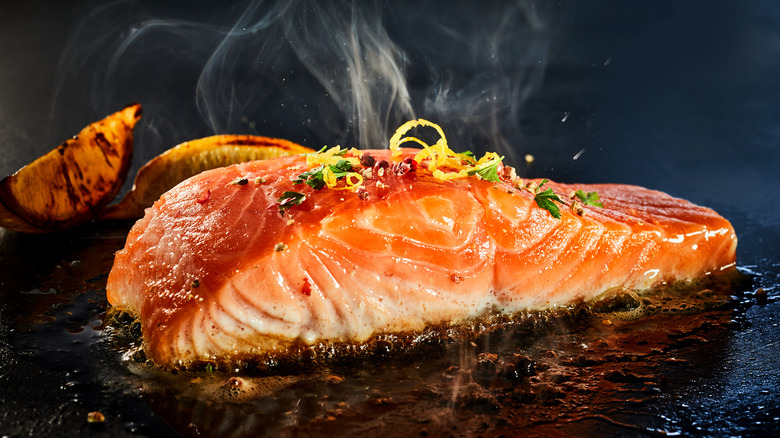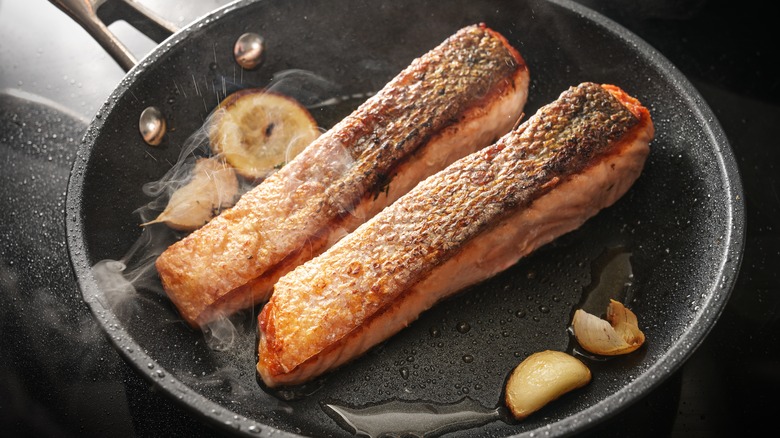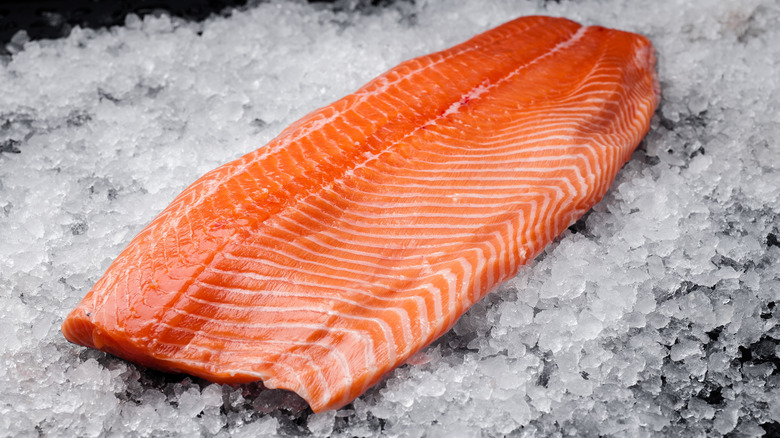An Hour In The Fridge Takes Salmon To Restaurant Status
Salmon is one of those things that's easy to make yet difficult to master whether it's lox or smoked. But the good news is that achieving restaurant-quality salmon at home is completely possible — even if you don't have restaurant-quality cookware or consider yourself a restaurant-quality cook.
Sure, a masterful piece of salmon will require just the right technique to develop that beautiful crispy skin, whether you pan-sear it, grill it, or bake it. And it'll require just the right amount of time and heat to deliver the buttery, melt-in-your-mouth texture that makes this fatty fish so delicious. But, equally as important, it will also require just the right prep to get it there.
When it comes to preparing salmon before you cook it, most recipes don't call for any specific steps other than seasoning the fish. Some will let it rest on the countertop to come to room temperature, and others will simply take it out of the fridge, pat it dry, and cook it. But if you want restaurant-quality salmon at home, there's a better way to prepare your fish. All you need is a plate, the fridge, and an hour of your time.
The key to restaurant-quality crispy skin
Before you can even start to perfect the cooking process, there's one crucial step that will prime your piece of fish for the ultimate crispy skin — which is what we're going for here, as that's one of the key qualities of restaurant-status salmon.
Next time you cook salmon, place your piece of fish skin-side up on a plate and put it in the fridge, uncovered, for at least an hour. Once your fish is properly chilled, season it to your liking, and then you're ready to cook. Rather than simply patting it dry, chilling your salmon in the fridge like this will dry out the skin more effectively — and the dryer the skin, the better it'll crisp up. You can even chill your salmon overnight if you want, salting the filets for a dry brine to really seal the deal.
For ultimate crispy skin, try cooking your salmon using the cold pan method. This means putting the filet skin-side down on some oil before you turn the heat on, then pressing the fish down with a spatula while you heat up the pan and allow the skin to get perfectly browned and crispy.
How to choose a quality piece of salmon
Now you know how to go about achieving restaurant-quality salmon in your own kitchen — but no matter how effectively you prep or cook your salmon, the whole process hinges on choosing a good-quality piece of fish in the first place. So how do you know you're picking a good fish?
There are a few indicators that a fish is fresh and healthy, which will deliver the best flavor and results. First, pay attention to its color: Salmon can be anywhere from pink or orange to red in hue, but you want the color to be vibrant rather than pale or dull; stay away from any fish with brown spots or discoloration. And give it a sniff too — fresh fish will have a briny, ocean scent to it, but it shouldn't smell overly fishy. Lastly, a good-quality piece of salmon will feel firm and springy to the touch, never mushy, floppy, or dried out.



